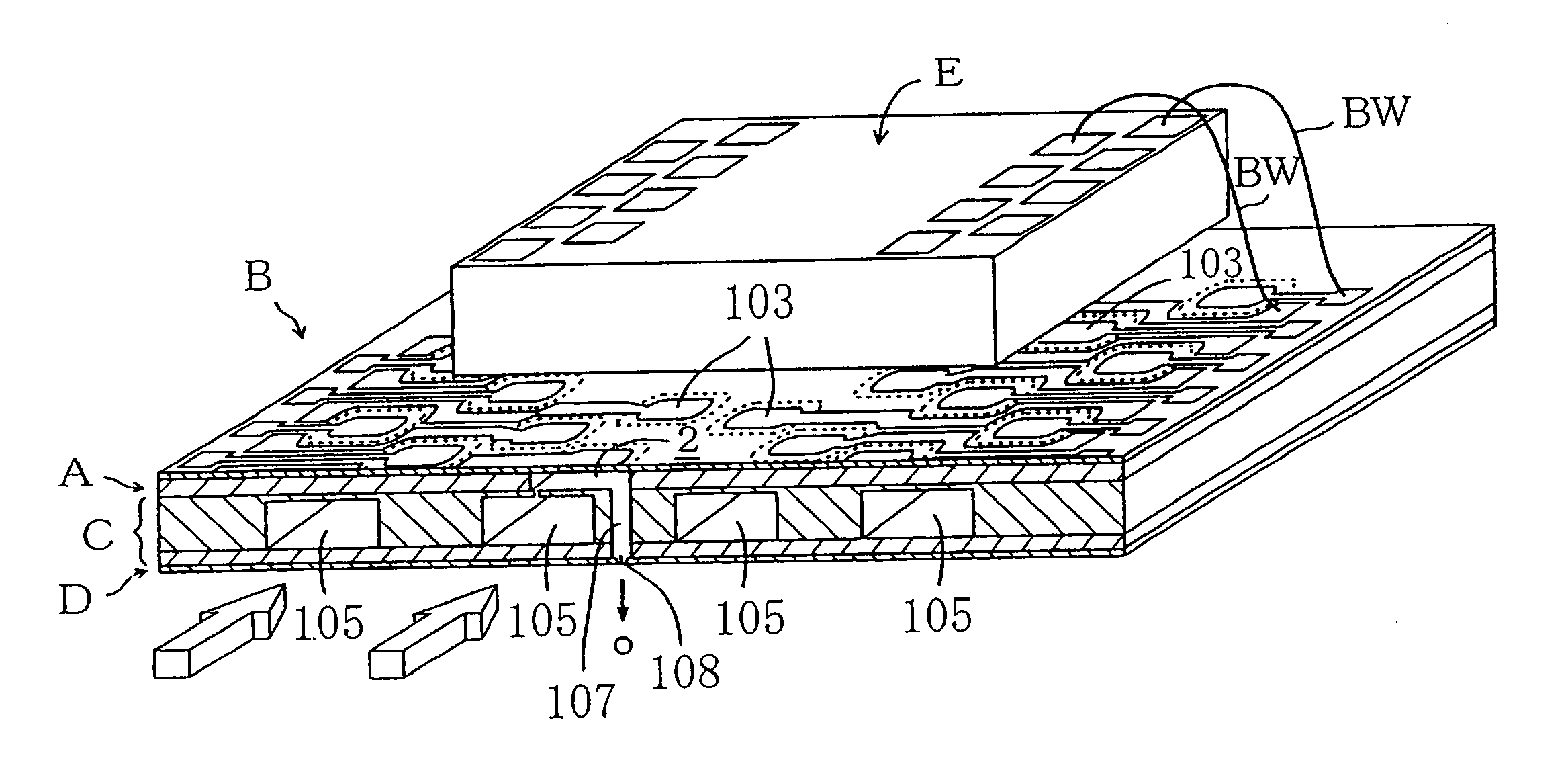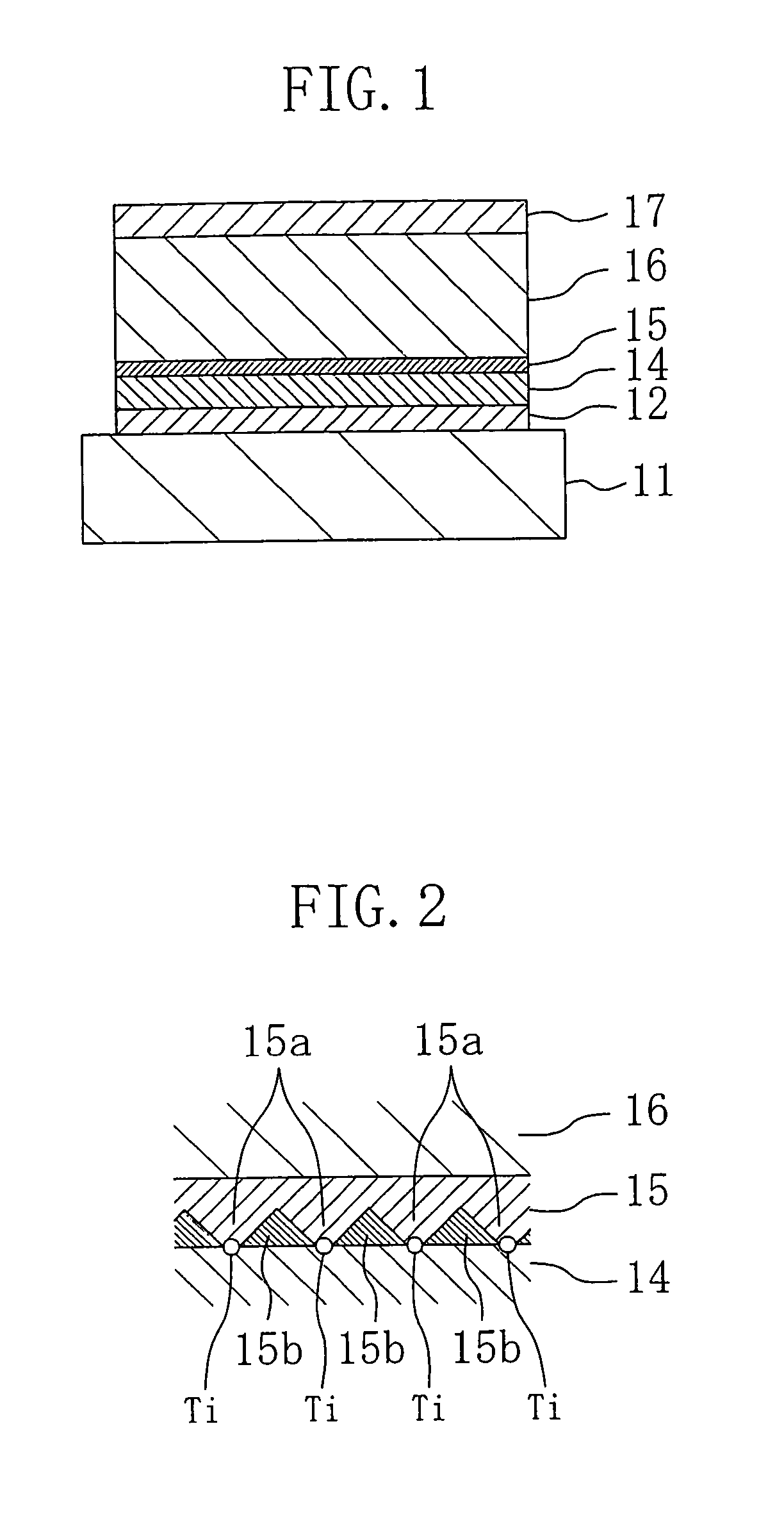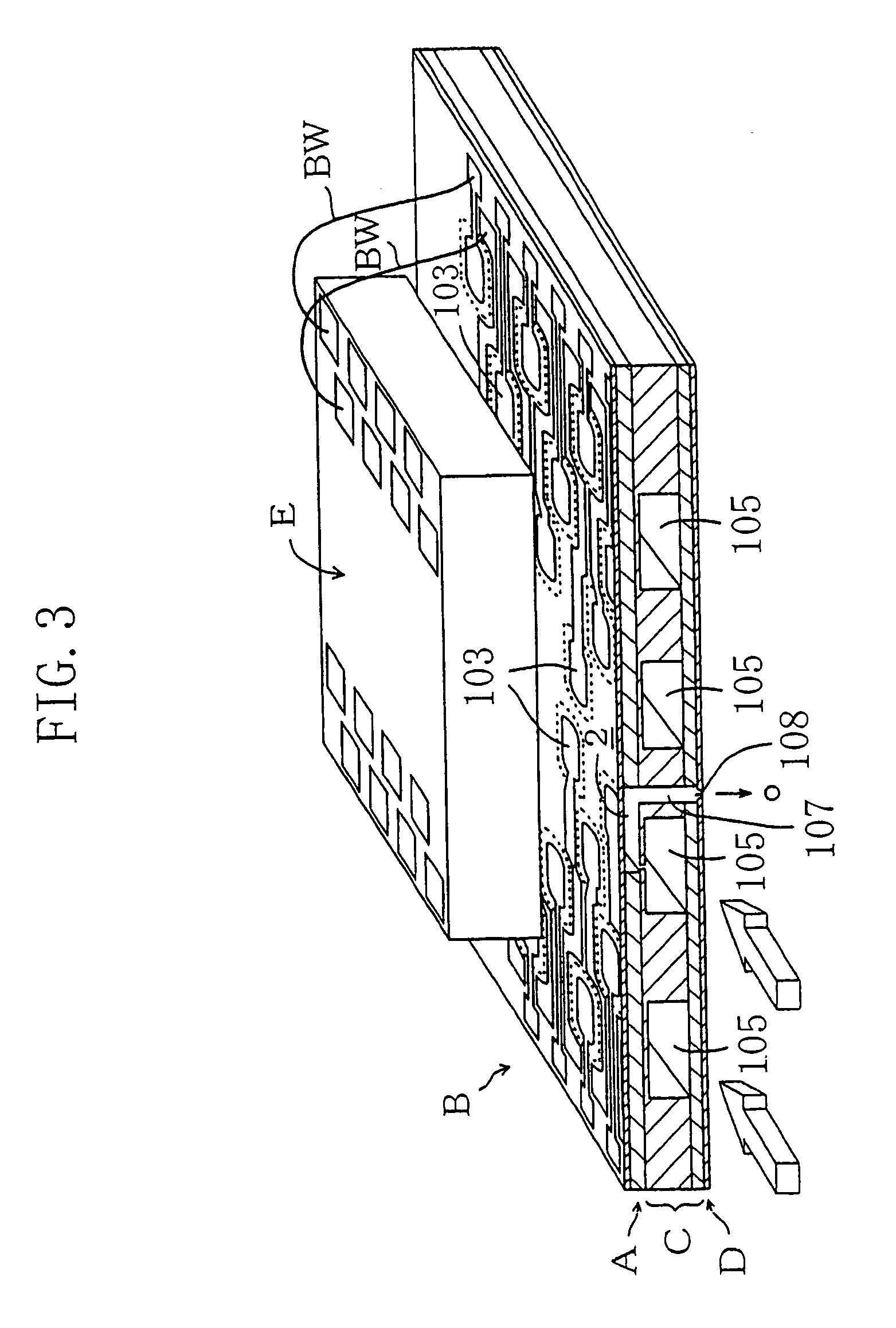Piezoelectric element, ink jet head, angular velocity sensor, manufacturing method thereof, and ink jet type recording apparatus
a technology of piezoelectric elements and manufacturing methods, which is applied in the direction of piezoelectric/electrostrictive device details, device material selection, instruments, etc., can solve the problems of increasing and thus the cost of piezoelectric elements used in ink jet heads, and achieves desirable printing performance and durability, and achieves easy-to-use ink jet recording apparatuses. , the effect of good oriented film
- Summary
- Abstract
- Description
- Claims
- Application Information
AI Technical Summary
Benefits of technology
Problems solved by technology
Method used
Image
Examples
embodiment 1
[0089]FIG. 1 illustrates a piezoelectric element according to an embodiment of the present invention. In the figure, the reference numeral 11 denotes a substrate made of a 4-inch silicon (Si) wafer having a thickness of 0.3 mm, and an adhesive layer 12 made of titanium (Ti) and having a thickness of 0.02 μm is formed on the substrate 11. Note that the substrate 11 is not limited to an Si substrate, but may alternatively be a glass substrate, a metal substrate, a ceramic substrate, or the like.
[0090]A first electrode layer 14 having a thickness of 0.22 μm and made of platinum (Pt) to which 2.1 mol % of Ti is added is formed on the adhesive layer 12. The first electrode layer 14 is oriented along the (111) plane.
[0091]An orientation control layer 15 made of PLT having a cubic or tetragonal perovskite crystalline structure whose lanthanum (La) content is 12 mol % and whose lead content is 8 mol % in excess of the stoichiometric composition is formed on the first electrode layer 14. The...
example 1
[0119]A piezoelectric element of Example 1 was produced by using the same material, thickness and manufacturing method for each film as those of the embodiment described above. No crack or peeling off was observed for any of the films of the piezoelectric element of Example 1.
[0120]The crystal orientation and the film composition of the piezoelectric layer before the formation of the second electrode layer were examined. Specifically, an analysis by an X-ray diffraction method showed that the piezoelectric layer had a (100)-oriented rhombohedral perovskite crystalline structure (degree of (100) orientation: α=97%). Moreover, an analysis of the composition of the PZT film with an X-ray microanalyzer showed that the Zr / Ti ratio was 53 / 47 as in the target composition.
[0121]Then, the crystal orientation and the film composition of the first electrode layer before the formation of the orientation control layer were examined. Specifically, an analysis by an X-ray diffraction method showed...
example 2
[0125]In Example 2, a 4-inch stainless steel (SUS304) having a thickness of 0.25 mm was used as the substrate, a tantalum (Ta) film having a thickness of 0.01 μm was used as the adhesive layer, a Pt film having a thickness of 0.25 μm and containing 8 mol % of titanium oxide was used as the first electrode layer, a PLT film (to which 3 mol % of magnesium was added) having a thickness of 0.03 μm and containing 17 mol % of lanthanum in which the lead content was 6 mol % in excess of the stoichiometric composition was used as the orientation control layer, a PZT film (Zr / Ti=40 / 60) having a thickness of 2.7 μm was used as the piezoelectric layer, and a Pt film having a thickness of 0.1 μm was used as the second electrode layer.
[0126]The adhesive layer was obtained by using a Ta target and applying a high-frequency power of 100 W thereto for 1 minute while heating the substrate to 500° C. in an argon gas at 1 Pa.
[0127]The first electrode layer was obtained by using a Ti target and a Pt ta...
PUM
| Property | Measurement | Unit |
|---|---|---|
| temperature | aaaaa | aaaaa |
| thickness | aaaaa | aaaaa |
| thickness | aaaaa | aaaaa |
Abstract
Description
Claims
Application Information
 Login to View More
Login to View More - R&D
- Intellectual Property
- Life Sciences
- Materials
- Tech Scout
- Unparalleled Data Quality
- Higher Quality Content
- 60% Fewer Hallucinations
Browse by: Latest US Patents, China's latest patents, Technical Efficacy Thesaurus, Application Domain, Technology Topic, Popular Technical Reports.
© 2025 PatSnap. All rights reserved.Legal|Privacy policy|Modern Slavery Act Transparency Statement|Sitemap|About US| Contact US: help@patsnap.com



